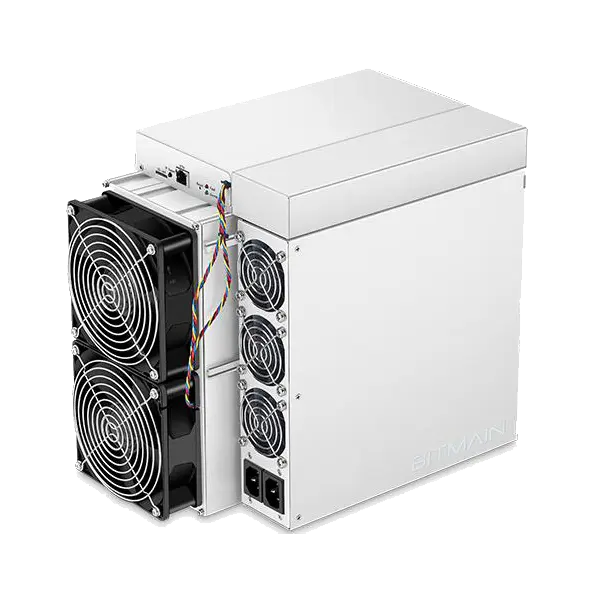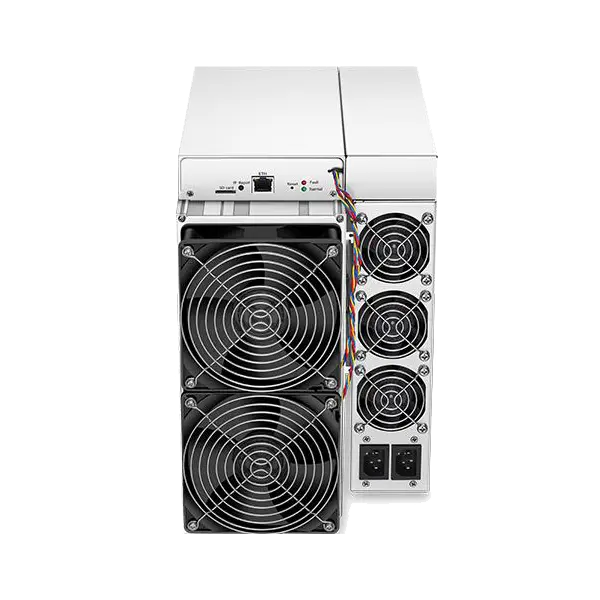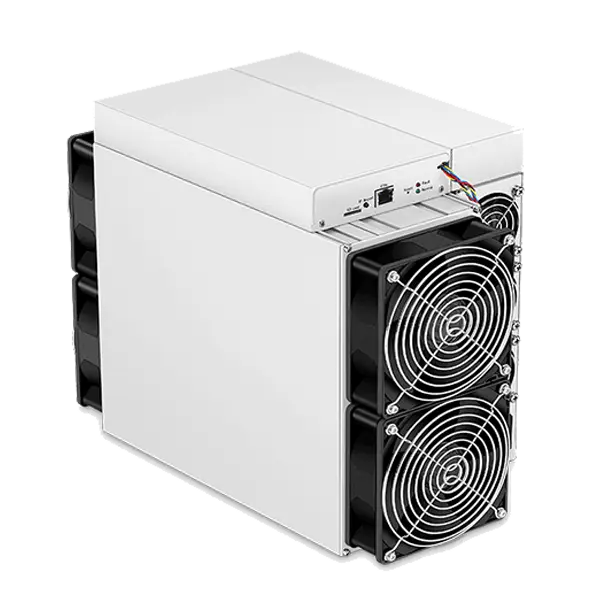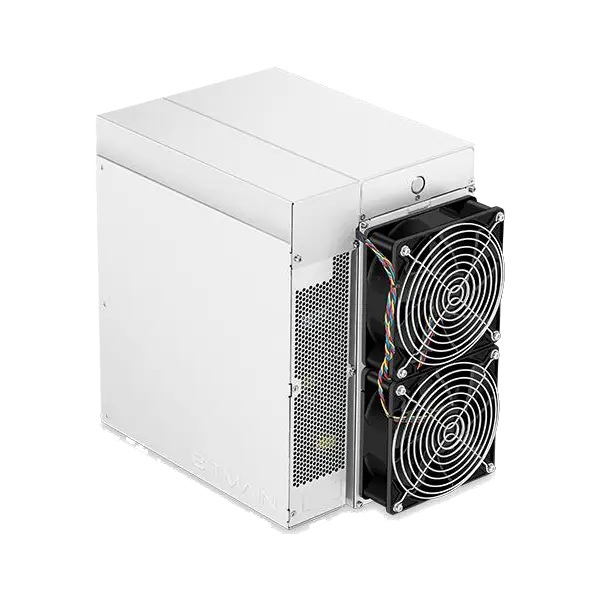Bitmain Antminer S17 53Th Bitcoin Miner: Powering the Bitcoin Network
The world of cryptocurrency mining is dynamic and fiercely competitive. At its heart lies the essential process of validating transactions and adding them to the blockchain ledger, a task performed by specialized hardware known as Application-Specific Integrated Circuit (ASIC) miners. Among the most recognizable names in this industry is Bitmain, a company renowned for its Antminer line of products. One notable machine in their lineage is the Bitmain Antminer S17 53Th Bitcoin Miner, a device designed specifically to tackle the computational challenges of mining Bitcoin and other SHA-256 based cryptocurrencies. Understanding this machine involves looking at its capabilities, its place in the evolution of mining hardware, and the critical specifications that define its performance.Bitcoin mining is not just a technical process; it’s an economic one. Miners invest significant capital in hardware and incur ongoing electricity costs, hoping that the value of the Bitcoin rewards they earn will outweigh their expenditures. Success hinges on processing power (hash rate) and energy efficiency. The Bitmain Antminer S17 53Th Bitcoin Miner was developed during a period where maximizing these two factors was paramount for achieving profitability and maintaining a competitive edge within the global Bitcoin network’s hash rate.The Evolution of Mining: Introducing the Antminer S17 Series
A Leap Forward in ASIC Technology
Bitmain has consistently pushed the boundaries of ASIC technology. From their early models to the more sophisticated units, each generation aims to deliver more computational power (measured in hashes per second) while consuming less energy. The Antminer S17 series represented a significant step in this ongoing evolution. Released in the first half of 2019, specifically around April, the S17 series marked Bitmain’s implementation of their second-generation 7nm semiconductor chip technology. This advancement was crucial, as smaller chip fabrication processes generally allow for more transistors to be packed into the same space, leading to higher processing power and potentially better energy efficiency compared to previous generations using larger chip nodes (like 10nm or 16nm).The arrival of the Antminer S17 series, including the specific Bitmain Antminer S17 53Th Bitcoin Miner model, signaled Bitmain’s commitment to maintaining leadership in the SHA-256 mining hardware market. It provided miners with a powerful new tool designed to compete effectively against the rising difficulty of the Bitcoin network. Network difficulty adjusts automatically based on the total hash power directed at the chain, meaning miners constantly need more powerful or more efficient hardware to maintain their share of block rewards.From S15 to S17: A Generational Upgrade
Identifying the Predecessor: The Antminer S15
To fully appreciate the advancements embodied by the Bitmain Antminer S17 53Th Bitcoin Miner, it’s essential to consider its direct predecessor, the Antminer S15. Launched in late 2018, the Antminer S15 was Bitmain’s first miner to utilize 7nm chip technology. It offered a notable improvement over the previous S9 generation (which used 16nm chips) and came in modes offering around 28 Th/s with high efficiency. The S15 set a new standard for its time, balancing hash rate and power consumption effectively.However, the crypto mining landscape evolves rapidly. While the S15 was a capable machine, the relentless increase in Bitcoin network difficulty and the drive for greater profitability necessitated further innovation. It served as a foundation, proving the viability of 7nm technology, but the market was ready for the next leap in performance.Key Advancements in the Bitmain Antminer S17 53Th Bitcoin Miner
The Bitmain Antminer S17 53Th Bitcoin Miner represented a significant upgrade over the S15. The core difference lay in the refinement of the 7nm chip technology – moving to Bitmain’s second-generation design. This refinement allowed for substantial gains in both raw hashing power and energy efficiency. While the S15 topped out around 28 Th/s, the S17 series offered models pushing well beyond that, with the Bitmain Antminer S17 53Th Bitcoin Miner hitting a formidable 53 Terahashes per second.This near-doubling of hash rate within the same product tier generation was a major selling point. Furthermore, the S17 series aimed to improve upon the power efficiency figures of the S15. While the S15 had efficiency ratings around 57 J/TH in its most efficient mode, the standard S17 models like the 53 Th/s variant targeted efficiency figures closer to 45 J/TH. This meant that for every Terahash of computing power, the Bitmain Antminer S17 53Th Bitcoin Miner was designed to consume significantly less electricity than its predecessor, directly impacting operational costs and profitability. Additionally, refinements were often made to the thermal design and cooling systems to manage the heat generated by the more powerful chips, aiming for improved stability and hardware longevity.Deep Dive: Bitmain Antminer S17 53Th Bitcoin Miner Specifications
Understanding the technical specifications of an ASIC miner is crucial for evaluating its performance, potential profitability, and suitability for a given mining operation. The Bitmain Antminer S17 53Th Bitcoin Miner has several key parameters that define its capabilities.Hash Rate: The Engine of Mining (53 TH/s)
Hash rate is arguably the most critical specification for any miner. It measures the number of calculations (hashes) the machine can perform per second. In the context of Bitcoin mining, these hashes are attempts to solve a complex mathematical puzzle. The miner who finds the correct solution (a valid hash below the network’s target value) gets to propose the next block of transactions and receives the block reward (newly minted Bitcoins plus transaction fees). A higher hash rate directly translates to more attempts per second, increasing the probability of finding a block solution before competitors.The Bitmain Antminer S17 53Th Bitcoin Miner boasts a hash rate of approximately 53 Terahashes per second (TH/s). That’s 53 *trillion* calculations every second. At the time of its release in 2019, this was a highly competitive figure, placing it among the more powerful ASIC miners available. For a miner, acquiring a machine with 53 TH/s meant significantly boosting their contribution to the network and their potential share of the mining rewards compared to older generation hardware like the Antminer S9 (around 13.5 TH/s) or even the S15.The importance of hash rate cannot be overstated. It directly determines competitiveness. As more miners join the network and overall network hash rate increases, the mining difficulty adjusts upwards. A miner’s individual hash rate relative to the total network hash rate dictates their statistical chance of earning rewards. Therefore, the 53 TH/s offered by this specific Bitmain Antminer S17 model provided a substantial operational capacity.Power Consumption: Managing Operational Costs (~2385W)
While hash rate determines potential income, power consumption dictates a major portion of the operational cost. The Bitmain Antminer S17 53Th Bitcoin Miner has a rated power consumption of approximately 2385 Watts (W). This figure represents the amount of electrical energy the miner draws from the wall while operating under typical conditions.Electricity cost is often the single largest ongoing expense for Bitcoin miners. A consumption of 2385W means the miner uses 2.385 kilowatt-hours (kWh) of energy for every hour it runs. Miners must calculate their electricity cost per kWh and multiply it by the miner’s consumption to determine the daily, monthly, and yearly running costs. For example, at $0.10 per kWh, running this miner would cost approximately $0.24 per hour, or $5.72 per day.The importance of this specification lies in its direct impact on profitability. Profit = (Mining Rewards) – (Electricity Costs + Other Costs). A miner operating in a region with high electricity prices will find profitability much harder to achieve, even with a high hash rate. Therefore, the 2385W consumption of the Bitmain Antminer S17 53Th Bitcoin Miner is a critical factor miners must consider when evaluating its economic viability. It necessitates access to affordable and stable electricity.Power Efficiency: The Profitability Metric (~45 J/TH)
Power efficiency ties the hash rate and power consumption together, providing a crucial metric for comparing different miners. It’s typically measured in Joules per Terahash (J/TH) or Watts per Terahash (W/TH). A lower J/TH value indicates better efficiency – the miner uses less energy to produce each Terahash of computing power. The Bitmain Antminer S17 53Th Bitcoin Miner has a power efficiency rating of approximately 45 J/TH (calculated as 2385W / 53 TH/s).This metric is vital for long-term profitability and competitiveness. As network difficulty rises over time, older, less efficient miners become unprofitable sooner because their electricity costs outweigh the value of the Bitcoin they can mine. A miner with superior efficiency (lower J/TH) can remain profitable for longer, even as difficulty increases or Bitcoin price fluctuates. The ~45 J/TH efficiency of the Bitmain Antminer S17 53Th Bitcoin Miner was a significant improvement over the Antminer S15 (around 57 J/TH in efficient mode) and vastly better than older generations like the S9 (around 100 J/TH). This enhanced efficiency was a key selling point, promising lower running costs per unit of hash power and extending the potential operational lifespan of the hardware.Mining Algorithm: Targeting SHA-256
ASIC miners are designed for a specific hashing algorithm. The Bitmain Antminer S17 53Th Bitcoin Miner is built to execute the SHA-256 (Secure Hash Algorithm 256-bit) algorithm. This is the cryptographic hash function used by Bitcoin (BTC) for its proof-of-work consensus mechanism.The importance of this specification is straightforward: this miner can only mine cryptocurrencies that use the SHA-256 algorithm. While Bitcoin is the primary target, other coins like Bitcoin Cash (BCH) and Bitcoin SV (BSV), as well as several smaller altcoins, also use SHA-256. Miners can choose which compatible coin to mine, often directing their hash power towards the most profitable option at any given time, or sticking with Bitcoin for its established market leadership and network effect. The specialization ensures optimal performance for that specific algorithm but means the hardware cannot be repurposed to mine coins using different algorithms (like Ethereum’s Ethash (pre-merge) or Litecoin’s Scrypt).Physical Design and Cooling
The physical characteristics of the Bitmain Antminer S17 53Th Bitcoin Miner also play a role. Its dimensions and weight influence deployment considerations, such as rack space, shelving strength, and shipping costs. More importantly, the thermal design is critical for performance and longevity. High-performance ASICs generate significant heat, and effective cooling is essential to prevent overheating, which can lead to reduced hash rates, instability, and permanent hardware damage.The S17 series typically featured an integrated design, housing the power supply unit (PSU) and mining boards within a single chassis, often using aluminum construction. Cooling was usually managed by high-speed fans operating in a push-pull configuration to force air through the unit and across the heatsinks attached to the ASIC chips. The S17 generation saw Bitmain utilize a parallel fan design intended to improve airflow and heat dissipation compared to previous models. Proper ventilation in the operating environment is crucial, and miners need to manage air intake and exhaust effectively. The operating temperature range specified by the manufacturer must be adhered to for reliable operation. Additionally, these miners produce considerable noise due to the high-speed fans, which is an important factor for miners operating in or near residential areas.Why Choose the Bitmain Antminer S17 53Th Bitcoin Miner? (Historical Context)
Competitive Edge at Launch
When the Bitmain Antminer S17 53Th Bitcoin Miner was released in 2019, it represented the cutting edge of commercially available Bitcoin mining hardware. Its combination of high hash rate (53 TH/s) and improved power efficiency (~45 J/TH) offered miners a significant advantage over older equipment. For mining operations looking to upgrade or expand, the S17 provided a pathway to increased potential earnings and better resilience against rising network difficulty. It was targeted towards serious hobbyist miners, as well as small to large-scale mining farms aiming to maximize their operational output.Built on Bitmain’s Legacy
Choosing a Bitmain product often comes with the assurance of purchasing from the industry’s dominant manufacturer. Bitmain’s Antminer brand is synonymous with Bitcoin mining, and the company has extensive experience in designing, producing, and distributing ASIC hardware globally. While no manufacturer is without its challenges or hardware issues, Bitmain’s market position and established support infrastructure (firmware updates, repair services – varying by region and time) were contributing factors for many buyers opting for the Bitmain Antminer S17 53Th Bitcoin Miner.Long-Term Potential (Considerations)
The improved power efficiency of the Bitmain Antminer S17 53Th Bitcoin Miner compared to its predecessors was key to its perceived long-term potential at launch. In the fast-paced world of crypto mining, efficiency often determines how long a piece of hardware can remain profitable. While newer, even more efficient models have since surpassed the S17 series, its ~45 J/TH rating allowed it to remain viable longer than the S9 or S15 generations. Today, its profitability depends heavily on electricity costs, Bitcoin price, and network difficulty, but it might still be operational in environments with very low power costs or serve as a capable option in the second-hand market for those with specific economic parameters.Setting Up and Operating Your Antminer S17
Prerequisites
Operating a powerful ASIC like the Bitmain Antminer S17 53Th Bitcoin Miner requires more than just plugging it in. Key prerequisites include:
1. **Adequate Power Supply:** The miner requires a stable power source, typically 220-240V AC, capable of handling its ~2385W consumption plus some headroom. Using the correct voltage and appropriate power cables (like C13/C14) and breakers is essential for safety and stability.
2. **Reliable Internet Connection:** A stable, low-latency internet connection (usually via Ethernet cable) is needed for the miner to communicate with the mining pool and receive work instructions.
3. **Suitable Environment:** The location must have good ventilation to dissipate the significant heat generated. Ambient temperatures should ideally be kept within the manufacturer’s recommended range (e.g., 5-40°C). Noise levels are high, so placement away from living or working areas is usually necessary.Basic Setup Process
Setting up the Bitmain Antminer S17 53Th Bitcoin Miner generally involves:
1. Connecting the power supply cord(s) to the miner and the wall outlet(s).
2. Connecting an Ethernet cable from the miner to the network router or switch.
3. Powering on the miner.
4. Finding the miner’s IP address on the local network (often using a tool provided by Bitmain or scanning the network).
5. Accessing the miner’s web-based configuration interface using a browser.
6. Entering the mining pool details (URL, worker name, password) provided by the chosen mining pool (e.g., F2Pool, Poolin, AntPool).
7. Saving the configuration and monitoring the miner’s status page to ensure it starts hashing correctly.Maintenance Considerations
To ensure optimal performance and longevity, regular maintenance is advisable. This includes:
1. **Cleaning:** Periodically cleaning dust buildup from fans and heatsinks is crucial for maintaining cooling efficiency. Compressed air is often used.
2. **Monitoring:** Regularly checking the miner’s status page for hash rate, chip temperatures, and fan speeds helps identify potential issues early.
3. **Firmware Updates:** Occasionally, Bitmain releases firmware updates that may improve performance, stability, or add features. Applying these updates (carefully following instructions) can be beneficial.
4. **Environment Check:** Ensuring the operating environment remains within acceptable temperature and humidity ranges is vital.The Role of the Bitmain Antminer S17 53Th Bitcoin Miner in the Broader Ecosystem
Securing the Bitcoin Network
Every hash performed by a Bitmain Antminer S17 53Th Bitcoin Miner contributes to the overall security of the Bitcoin network. The combined hash power of all miners worldwide makes the network resistant to attacks (like 51% attacks) because an attacker would need to amass an enormous amount of computing power to compromise the blockchain ledger. By participating in the mining process, machines like the S17 help validate transactions, maintain consensus, and ensure the integrity and immutability of Bitcoin’s public record.Democratization of Mining (At its Time)
While large mining farms dominate the landscape, the availability of powerful ASICs like the Bitmain Antminer S17 53Th Bitcoin Miner allowed smaller entities and even dedicated individuals (with access to suitable infrastructure and power costs) to participate meaningfully in Bitcoin mining. Compared to the very early days of CPU and GPU mining, ASICs professionalized the industry but also created opportunities for specialized investment. The S17, being a high-performance machine available on the open market, continued this trend, enabling a wider distribution of hash power compared to a scenario where only a few entities could develop such potent hardware.Final Thoughts
Summarizing the Bitmain Antminer S17 53Th Bitcoin Miner
The Bitmain Antminer S17 53Th Bitcoin Miner stands as a significant marker in the history of Bitcoin mining hardware. Released in 2019, it leveraged Bitmain’s second-generation 7nm chip technology to deliver a potent combination of 53 TH/s hash rate and approximately 45 J/TH power efficiency. This represented a substantial leap over its predecessor, the Antminer S15, offering miners enhanced competitiveness and improved operational economics at the time.Its specifications – high hash rate for earning potential, manageable (though significant) power consumption, competitive efficiency for longevity, and SHA-256 algorithm focus – defined its role in the market. While newer generations of ASICs have since emerged with even greater power and efficiency, the Bitmain Antminer S17 53Th Bitcoin Miner played a crucial role in securing the Bitcoin network during its operational peak and represented a powerful tool for miners aiming for profitability in a challenging environment. Its legacy persists, both as a key technological step and potentially as a viable option in specific niches of the current mining landscape.













